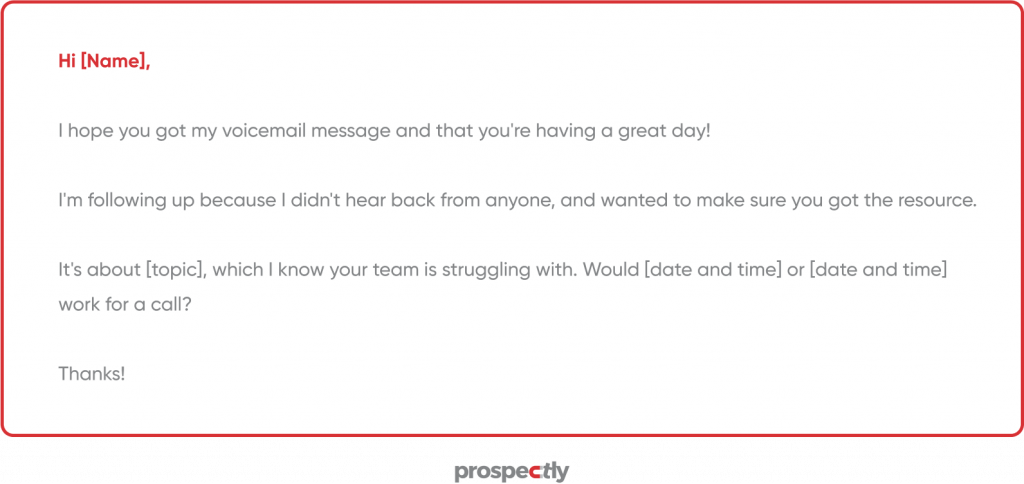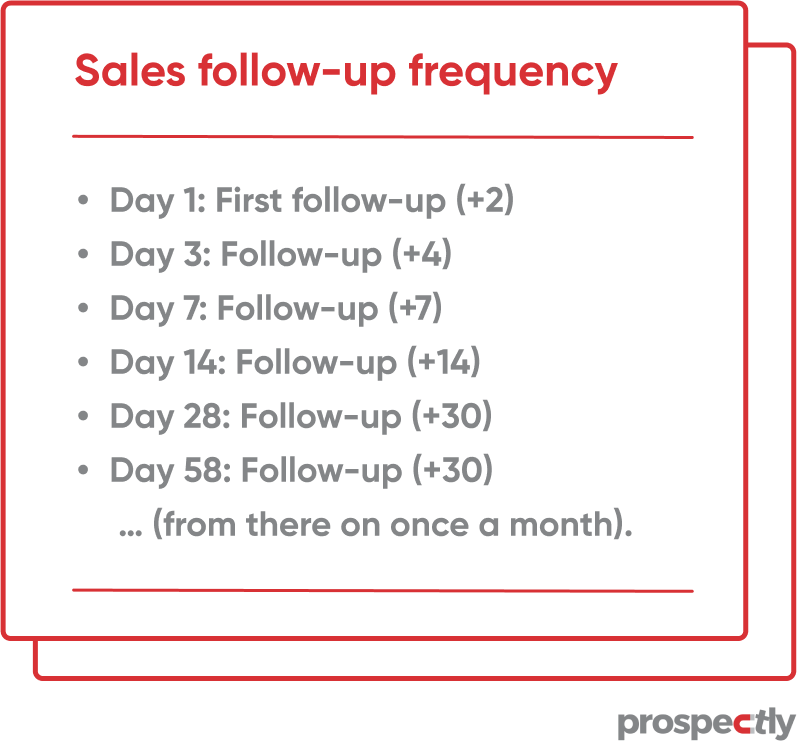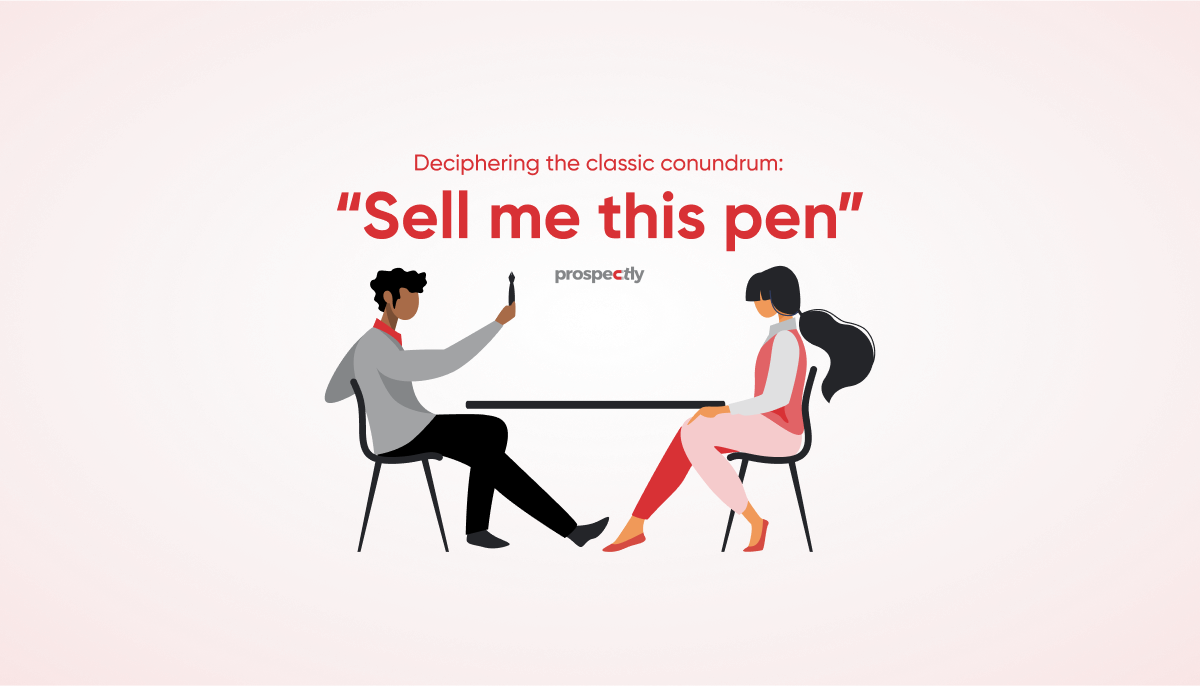14 Clever sales follow-up tactics to up your game

Have you ever gone on a date and then never heard from the person again? It’s not a good feeling. It’s especially bad when the date has been going really, really well. I mean everything was clicking, you were vibing together but… silence. Or maybe they just buzzed you and said “taking time to think about it” or “not sure it’s right for me.”
Those are classic symptoms of an unclosed deal!
Sending a follow-up message to potential clients is a great way to remind them that you’re there. Even if they ignored your previous message, perhaps they were busy or forgot, a sales follow-up email will make them think again about your offer.
Let’s jump into elite techniques to take your sales follow-up to another level.
What is follow-up in selling?
A sales follow-up is pursuing leads or potential customers by phone, email, or even in person. It helps you build a relationship with the prospect, uncover their pain points, and doubles your chances of making the sale.
Anna Scheller is a hospitality expert and the host of USABizParty. She says: “Follow up, follow up, follow up. That’s a major part of #sales. If you find it tedious, make a game out of it – how many follow-up calls can you make in a day?”
To be a sales rockstar, Nico James- a leadership expert-says you need nine qualities and one of them is sales follow-up skills.
Sales stats seem to agree with this fact. That’s because 42 % percent of customers are more ready to purchase from a salesperson if they followed up at a specific and agreed time – Invespcro.com.
What does it mean for reps? You should relentlessly pursue your prospect until they say yes or no. Without a clear-cut follow-up strategy, you’ll miss sales opportunities.
14 Sales follow-up strategies

A sales follow-up is a phone call or email to a potential customer to get them to take action. But what determines the channel of communication you should use? It depends on what kind of response you want.
A follow-up sales call is ideal if you want a quick response. But the prospect may disappear from y0ur radar if they think you’ve made too many calls.
On the other hand, a sales email follow-up is handy if you’re looking to achieve a positive result. You can create a sales cadence or several touchpoints to warm up your potential customers and establish a relationship. For example, you can blend calls, emails, social media, etc.
Let’s jump into some clever ways for following up on your potential customer to crush your sales goals.
1. Sales follow-up email
One great thing about emails is that they’re visual – you can be creative to grab the reader’s attention. The potential buyer can bookmark them or label them as “important” or “follow up later.” They can even share the emails with others if they provide value.
But you need to remember you’re not the only one seeking the prospect’s attention. Emails may remain unread or unopened or land in the trash folder. As a result, you may be unsuccessful in your first attempts. So keep it at until one is read.
Here are some follow-up sales email templates to spark your creativity and give you a springboard. Note that your emails must satisfy KISS (Keep it Short & Sweet/Simple) but also be professional.
Email 1. Subject line: You said you’d think about it… have you yet?

Email 2. Subject line: Yes, I’d love to learn more about your product/services

Email 3. Subject line: It’s good news. Here is the information you asked for.

Email 4. Subject line: Questions? Have more questions?
It’s a follow-up sales email after no response.

Email 5. An example by Close.com

Email 6. Subject line: You made a promise…

Email 7: Subject lines: Charlie, if you don’t want to read this email, I completely understand/I’m sorry to hear that you don’t want to work with us./Hey! I get it. You’re busy. It’s always a pleasure…
Use these follow-up sales emails to inform the prospect that you’re prepared to disengage due to their lack of response.

Or

2. Follow-up sales calls
Phone calls are also excellent ways to get instant feedback and build a personal relationship with y0ur prospect. However, countless calls within a short space of time can irritate the receiver. Instead, leave a voicemail after three calls.
Anything more than that can be invasive and the potential buyer may think you’re desperate. Be prepared to abort your mission if there’s no response.
Also read: Cold calling scripts: 13 steps and 4 script templates to close more deals
3. Sales follow-up via social media
You can engage prospects on social media by liking, sharing their posts, sending LinkedIn invites, etc. Avoid overdoing it as someone may think you’re stalking them.
Your own blogs or articles can be another way of building connections.
4. Sales follow-up through face-to-face meetings
It’s simple. Show up at the customer’s office to pitch your proposal or try to schedule a meeting with them at their convenient time. It shows you’re sincere, but some people may think you’re intruding into their space.
5. Sales follow-up via handwritten notes
Ever thought of using a handwritten note to follow up on a sales lead? It could be an effective weapon to elicit a response because the short message looks personal. Zapier.com says handwritten cards can “convert leads, show appreciation, and strengthen relationships.”
6. Sales follow-up by fax
In this digital age, the use of fax devices to check on your potential buyer looks old-fashioned. But for reasons, such as some businesses still using fax, integration with the internet, faster than letter email, etc., makes the fax machine quite a good tool.
You can use it once in a while – it’s least cluttered and can surprise the prospect. However, it’s not your primary medium.
7. Sales follow-up via personalized videos
Emails and calls are brilliant ways of pursuing potential buyers. But sometimes, they receive a low response rate. Instead, be creative and send your prospect personalized short videos. You don’t need to have sophisticated tools to do that – you can find software on the internet.
Best tips on how to effectively follow up in sales
With the above communication channels in mind, let’s dive into more tactics to sharpen your sales follow-up skills.
8. Provide value
Before you send out your emails, have first-hand info about the challenges your prospects face. It’ll enable you to provide something relevant, such as links, articles, etc., to make their lives better. But, also avoid offering resources for the sake of it – instead, consider your objectives.
Giving helpful assets away like eBooks isn’t selling. Your chief aim is to help your potential customer fix their pain points and build a relationship that’ll lead to a sale.
9. Keep it short & sweet
Time is a scarce commodity as people are always busy. Because of this, ensure your calls, texts, and emails are concise. Long-winding statements with lots of pleasantries risk landing in the trash folder or being ignored. Just cut to the chase.
10. Give the potential buyer enough room to breathe
Each product has a different sales cycle and every customer has their buying timeline. So it makes sense to allow the prospect as much time as they want. For example, if they say you need to ping them after a week, do so.
Also, define the next steps. Instead of saying, “I’ll have a chat with you the following Thursday, say, I’ll buzz you on Thursday at 9 am.” It’s more specific.
11. Enticing subject lines
We gave you examples of subject lines you could use in sales email follow-ups. Your subject lines should create curiosity to boost the open and reply rates.
Some more examples include:
- “Putting in work on your biz?
- “Let’s Talk!”
- “It’s Time to Make Your Move”
- “Still unsure?”
- “Take a look! To see something you weren’t meant to see!’
- “Looks like Hilton is ready to make a deal with you again.”
- “See it. Feel it. Love it.”
12. Use data and analytics
Back up your claims about your product with industry experts, case studies, and testimonials to add more credibility. Again, measure and analyze the effectiveness of your sales email follow-up templates. Do the subject lines work?
13. Inject some personality
While it’s great to use the sales email templates we’ve provided, be yourself. Remember people do business with people they respect and like. Fuse y0ur unique style, beliefs, and personality with the emails, calls, etc. For example, you may be more informal and conversational in your messages. It’s fine as long as you’re professional.
14. Be ready to abort your mission
After trying all the tricks in the sales book, you may still hit a brick wall. It’s a sign to back off and move on. No hard feelings.
How often should you follow up on your leads and potential customers?
The basic idea of a sales follow-up is that you want the likely buyer to respond- whether they give you a sale or not. It entails making as many calls, emails, texts, etc., as necessary. For example, if the prospect says they’re tied up, find out the best time to contact them again.
So even if the customer tells you to get back to them after seven days, calendar the event and ping them at the right time. In other words, follow-up, follow-up. Remember no retreat, no surrender.
Avoid being one of the 48% of reps who don’t attempt to make one sales follow-up, according to Invespcro.com . You need to bust the myth.
Steli Efti, the author of the Follow-up Formula, suggests chasing after your customer a maximum of six times. Only do this if you’ve never contacted the prospect before and you’re relying on cold prospecting.
But follow up on the lead as many times as you can if you’ve some relationship with them and they’ve never said no. Here’s a specific frequency that he recommends.

You’ll need a CRM tool to help create the above sequence and schedule automated emails.
The time is now. Follow up, Follow up
Sales follow-up is a crucial part of your sales process. It helps create a relationship with your potential customer and ensures that you don’t lose the sale. Successful sales follow-up requires personalized and timely messages. They should provide value and tell the prospect what they need to do next.
Also read: 7 Best cold email templates to increase your response rate




